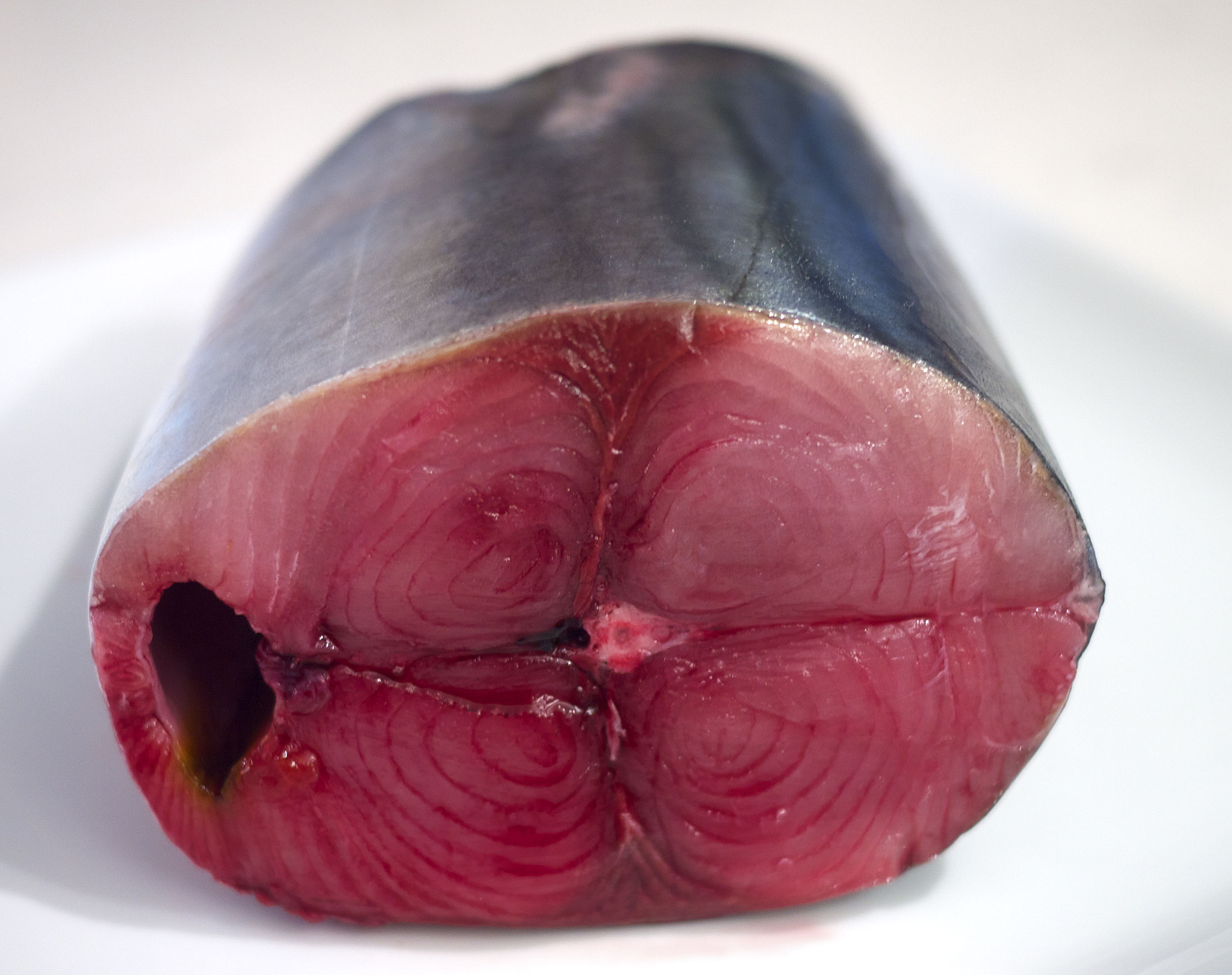In the world of sushi and sashimi, maguro (tuna, especially bluefin tuna) currently reigns supreme. It's so popular that large specimens of the fish fetch ridiculous, headline-grabbing prices at the Tsukiji wholesale market in Tokyo, and the species is in danger of extinction due to overfishing. But bluefin was not always the king of Japan's culinary sea — it only became popular in the 20th century. The fish that reigned supreme before it was skipjack tuna — better known as bonito, and as katsuo in Japanese.
Katsuo is one of the most important fish on the Japanese menu. Dried and fermented it becomes katsuobushi, one of the main ingredients in dashi stock, the foundation of Japanese cooking. But katsuo is also eaten in many other ways: as tsukudani, preserved by cooking in a sweet-salty sauce; as shiokara, cured in salt; coated in flour and deep-fried; and, of course, raw or almost raw. The most popular way it's served these days is as tataki — seared on the outside, still raw on the inside, sliced and eaten as sashimi. Katsuo tataki is a speciality of Kochi Prefecture, where it's seared over a sweet-smelling straw fire.
Katsuo has been a perennial favorite in Japan, perhaps because it was and still is very abundant near its shores. There are records of katsuo being served to the Yamato Imperial Court in the third century, and its importance as a food is reflected by katsuobushi's use as one of the formal offerings made at a Shinto shrine.
















With your current subscription plan you can comment on stories. However, before writing your first comment, please create a display name in the Profile section of your subscriber account page.